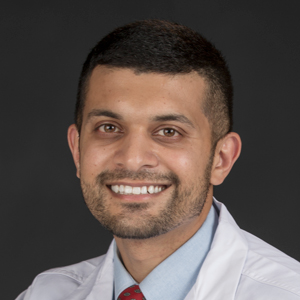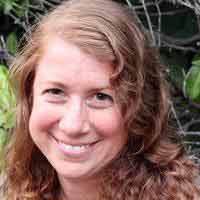When you click on a sponsoring school or program advertised on our site, or fill out a form to request information from a sponsoring school, we may earn a commission. View our advertising disclosure for more details.
“People have heard of internal medicine doctors. I like to say we’re external medicine doctors. [Physiatry] is very much like muscular sports. It’s highly activity-oriented, helping people get back to doing what they enjoy.”
– Haris Choudry, MD, Program Director, New York Society of Physical Medicine and Rehabilitation (NYS PM&R)
With only about 100 training programs nationwide, providers of medical rehabilitation occupy a role that is not as widely known as other medical practitioners. Though other medical specialty areas have four to five times the number of programs, the practice of physiatry (pronounced fi zeye uh tree) is an excellent option for those interested in a rewarding, patient-centered career.
Physiatry is commonly referred to as the practice of physical medicine and rehabilitation (PM&R). PM&R doctors work in both inpatient and outpatient settings. Patients receive these services following an injury, illness, or disabling condition that affects not just the bones, joints, ligaments, muscles, and tendons—as one might expect—but the brain, spinal cord, and nerves, too.
Physiatrists are charged with diagnosing PM&R patients, treating pain, determining treatment, and implementing treatment plans. They tend to PM&R patients, and their treatment includes injections, osteopathic treatment, prosthetics and orthotics, and EMG/nerve conduction studies.
September 16-22, 2024 is National Rehabilitation Awareness Week, sponsored by the American Medical Rehabilitation Providers Association (AMRPA). Historically, the week has served to educate people about the benefits and impact of medical rehabilitation, the opportunities for Americans with disabilities, and how to help individuals who are alter-abled live to their full potential.
In honor of this important sector of the medical community, Dr. Haris Choudry, program director of the New York Society of Physical Medicine and Rehabilitation (NYS PM&R), generously volunteered his time to speak with us.
Meet the Expert: Haris Choudry, MD

Dr. Haris Choudry is the program director and education chair of the New York Society of Physical Medicine and Rehabilitation (NYS PM&R). He is also a practicing physiatrist at Burke Rehabilitation Hospital in White Plains, New York, where he serves as the PM&R residency program director and provides patient care focused on musculoskeletal medicine, amputee rehabilitation, and stroke rehabilitation.
A former educator, Dr. Choudry holds degrees from the University of Oklahoma College of Medicine (MD), Johns Hopkins (MPH), and the University of Oklahoma (BS). He completed his residency in PM&R at SUNY Downstate Health Sciences University in Brooklyn and speaks English, Spanish, and Urdu.
Essence & Impact of PM&R
PM&R is about quality of life; it’s about action, movement, and momentum. Dr. Choudry shared, “People have heard of internal medicine doctors. I like to say we’re external medicine doctors. It’s very much like muscular sports. It’s highly activity-oriented, helping people get back to doing what they enjoy.”
While other medical specialty areas are focused on the extension of life, or longevity, PM&R is focused on the “quality of years, rather than extension of years,” he explained. “Our focus is on giving quality of life to the amount people have.” This entails helping individuals achieve functional independence, for example, to be independent at home, go out in the community, help others, participate socially, and enjoy themselves.
Tending to quality of life requires a holistic approach to care. Many PM&R patients, whether in inpatient or outpatient settings, are dealing with a variety of issues stemming from their illness, injury, or medical condition; this requires a medical professional with a wide skill set—a doctor who is able to consider the many facets of human healing and wellbeing. Dr. Choudry elaborated on this, using an example from the current focus of his work: inpatient stroke rehab.
You’re not just the medical doctor; you’re also a guide, an educator, and a sense of support. There’s the patient’s life before the stroke, and there’s their life after the stroke. It’s a difficult period in life, and they need someone to help them through that. A good rehab physician is able to not just focus on the medical part, but [also] the psychological, the social, the educational, the family around them, the goal setting…
We may think that the outpatient side of the practice requires less of a holistic approach or has less of an impact than working in an inpatient setting, but this is not the case. Speaking about his work helping amputees get prosthetics, Dr. Choudry said, “You’re literally giving something that changes their whole life…and that’s pretty rewarding as well.”
A Highly Collaborative Role
The phrase “physical medicine and rehabilitation” may lead the layperson’s mind to the work of physical therapists. This makes sense as physiatry requires an in-depth understanding of rehabilitation and therapy.
But while there is some overlap between the fields of physical therapy and physiatry, the physiatrist is the medical doctor who diagnoses and determines treatment for PM&R patients, whereas physical therapists and a host of other healthcare professionals then deliver/administer the treatment.
As such, PM&R is a highly interdisciplinary field that requires the collaboration of various medical professionals. PM&R doctors are positioned on the medical side of care, providing diagnosis and treatments, which can include interventions, injections, bracing adaptive equipment, all the way up to surgery. At this point, the PM&R physician would refer the patient to a surgeon.
So in addition to physiatrists, the PM&R team may include nurses; physical, occupational, and speech therapists; case managers; and social workers. Dr. Choudry further clarified the collaborative nature of the field:
[Physiatrists] are part of that team, in the outpatient setting, in close communication with these other specialists. I don’t consider us as sitting at the head of the table. I consider it a round table, and everyone’s got something positive to bring, and you need to listen and hear and have questions in the role of the physiatrist.
Issues in the Field: Prominence & Competition
One of the main issues in physiatry is that it’s a small field that lacks a strong presence in the medical community. It also overlaps with many other fields, which can make it difficult for patients to find and work with a physiatrist.
The high demand for PM&R doctors is certainly positive, indicating that the field is growing, but this also presents a challenge for medical students in physiatry as the field is competitive due to the low number of programs compared to other specialty areas. So, medical students in PM&R need to start building up their CVs early.
To stay competitive and boost their candidacy, PM&R students benefit from membership in professional organizations that can provide mentorship, research opportunities, residencies, and ways to connect with other professionals and build skills. In a relatively small field like PM&R, getting to know people in person can make a big difference. The Association of Academic Physiatrists and the American Association of PM&R are two such associations.
In addition to professional organizations, most medical schools have dedicated departments where students can access advising, resources, and guidance.
Rehabilitation Awareness Week Resources
To prepare for work in physiatry, conducting high-level research and clinical rotations at sites where you’d like to eventually be employed can be especially beneficial. Dr. Choudry offered these final thoughts:
It’s a relatively small field, so getting to know people and networking can make a big difference…Everyone’s a good candidate on paper, but getting to meet someone in person or having worked with them makes a big difference for applications.
For further information, visit the following links:
- American Medical Rehabilitation Providers Association (AMRPA)
- National Rehabilitation Awareness Week (AMRPA)
- New York Society of Physical and Medical Rehabilitation (NYSPMR)
- Association of American Physical Medicine and Rehabilitation – Medical Student Resources (AAPMR)
- Association of American Physical Medicine and Rehabilitation PM&R Resource Links (AAPMR)
- Association of American Physical Medicine and Rehabilitation Patient Resources (AAPMR)
- Medical Student Council – Association of Academic Physiatrists (AAPMR)
